Day 1: Heathrow to Tashkent
 22. august 2019, Usbekistan ⋅ ☀️ 33 °C
22. august 2019, Usbekistan ⋅ ☀️ 33 °C
It's around 1 p.m. when I find myself at the start of a new adventure, ready to check in at Heathrow. Since my trip to Mexico in February/March, quite a bit has changed and we have a new Prime Minister, but quite a lot has not changed and the country is still in a state of uncertainty. So what better than to go from Mexit to Uzbexit?
I am bound for Central Asia to a place which I have longed to visit for many years, to view the fabulous historic buildings of Samarkand, Bukhara and other cities which formed part of a proud civilisation in the 14th and 15th centuries, while we were fighting the Hundred Years War. It was also at the centre of the Silk Road and cities are known to have existed here since 500 B.C. In its time Uzbekistan has seen, for vastly different reasons, the visits of Alexander the Great, Ghengis Khan, Marco Polo and Ibn Battuta. So I am in distinguished company and I can't wait to get there.
It's not a direct flight and there is a change at Istanbul. Its newly opened airport is a model of efficiency and in the secure transit area there is no need for passport or security controls (unlike certain countries I could name). No sleep for me on the connecting flight but there's the consolation that on arrival it will be "only" 3 a.m. on British Summer Time.Læs mere
Days 2 and 3: Tashkent
 23. august 2019, Usbekistan ⋅ ☀️ 23 °C
23. august 2019, Usbekistan ⋅ ☀️ 23 °C
It's 7 a.m. Uzbek time as I pass into the spacious arrivals area. Officialdom is evidently trying to encourage independent tourism by removing some of the former hassle: no visa, no immigration form and no customs declaration. More than could be said for other countries I could name! I manage to catch the exchange kiosk before it closes for breakfast; the lady examines my British currency suspiciously and wipes at some imaginary blemishes. There have been warnings of even the most slightly damaged currency being rejected but she accepts it all. And here's the crunch: there are 10,000---yes, ten thousand---Uzbek som to the pound so by exchanging £300 I am am millionaire 3 times over. Moreover, the 10,000 note is the largest in common circulation so I have to find a way to stash 300 of these about my person. The first quirk of this charmingly quirky country.
I recognise the guy who has come to meet me because his face is pictured on the front page of the guest house where I'm due to stay. His name is Sardor, he speaks good English and is briskly efficient. He whisks me through the almost deserted streets, pointing out various monuments on the way---the central railway station here, the statue of Tamerlane (the country's greatest ruler in the 14th-15th centuries) and the monolithic Hotel Uzbekistan round the corner.
My accommodation is named after Jules Verne who while not coming to Central Asia, at least wrote of travelling to the centre of the earth. It's a shoes-off place which marks it as a family-run guest house. Having pre-registered for last night, I am eligible for breakfast which includes a sort of sweet porridge, mountains of bread with cheese, jam and the obligatory boiled egg. And the even more obligatory green tea. I am well satisfied and am ready for sleep but not before slipping on the wet floor in the shower and falling flat on my bum. The trip almost finishes before it started and I don't do much for the rest of the day.
The next day I've recovered enough to take a metro to the city centre. A 15 minute walk from the guest house, the metro service is a bargain at 1,400 som (14p!) The stations are all designed differently and in some cases look like the interiors of mosques---very impressive. Emerging at ground level, I am struck by the way the city is so spread out. It was remodelled after an earthquake in 1966 and most of the avenues are 5 lanes in each direction. There is much formal parkland and little high-rise, the 16-storey Hotel Uzbekistan being one of the tallest buildings in this city of 2.5 million people. But where are they all?---apart from an outdoor shopping area where they sell souvenirs and ice creams, there is little of the bustle that one would expect in an Asian city or even London. Strange.Læs mere
Days 4 & 5: Kokand
 25. august 2019, Usbekistan ⋅ ☀️ 32 °C
25. august 2019, Usbekistan ⋅ ☀️ 32 °C
Sardor has arranged a taxi to take me to the southern railway station. Due to the wideness of the streets, the standard of driving is cavalier to put it kindly. Motorists straddle the lanes and when they do change lanes, they don't signal. They jump the lights while parked cars routinely open their offside doors without looking. When I start to attach my seat belt, my driver smiles sadly as if to say, belts are for wimps! In fact the concept of safety is quite different in Uzbekistan to that in, say, Brazil where one of the main topics is robbery. Here, besides the driving, it's about obstacles such as conduits running alongside the pavement or uncovered manholes. Fall down one of those and your injury could be much worse than my trip in the shower.
Anyway, I emerge at the southern railway station unscathed for my first rail experience here. To save messing about at a booking office, all my tickets were purchased in advance through an agency based in Tashkent. Thanks to Advantour for that. In Uzbekistan the word for railway station is "vokzal" and It's no coincidence that this sounds like Vauxhall. A hundred or more years ago when Russian engineers visited Waterloo station in London for advice about how to build railways, they assumed that because so many trains were going to Vauxhall that that must be the word for station! Or so they say..... This place is busy but spotless. I am concerned that there is no platform indicator and all the announcements are in Uzbek but there are enough uniformed staff to help out. On the train, every carriage has its own conductor so finding the correct carriage is simple.
The air conditioning doesn't start working until the train starts but it leaves on time and the seats in business class are luxurious. Vendors of snacks and drinks ply the carriages regularly. As we near Kokand four hours later, a young man strikes up a conversation to practise his English. At Kokand he is due to be met by his father, who drives me to my hotel before they set off for home. A good example of Uzbek hospitality.
And what of Kokand? It's a city of about a quarter of a million and was an 18th century sultanate. The Khudayar Khan palace is a 19th century creation echoing the Timurid wonders I am to see later in the trip; a grandiose facade with every inch covered in coloured, patterned tiles, and courtyards bounded by pointed arches. Nearer my hotel there's a nice view of the square from a 3rd floor window, and an official building beside a fountain which seems to be Russian Art Nouveau. I am starting to find that people can be much more receptive to being photographed than in some Islamic countries and the curator with his young charge at another museum is happy to oblige. Not sure what the large group of young women was getting prepared for but they were also unfazed by a Western camera. And on another quirky note, spot the deliberate mistake on the Turkish T-shirt!Læs mere

Speak, WorldOh dear, I don’t get the mistake on the T-shirt. Wrong bridge? Girl is the wrong nationality? It’s impossible to love London right now with the ghastly politics? I give up!
Days 6 & 7: Back to Tashkent
 27. august 2019, Usbekistan ⋅ ☀️ 34 °C
27. august 2019, Usbekistan ⋅ ☀️ 34 °C
After a 4-hour train ride I am back in Tashkent. No mistake in explaining to the driver my destination; it is the Hotel Uzbekistan, all 16 storeys of it in this low-rise city. And here's another thing about driving: it's common to ride in unlicensed vehicles, a practice deemed dangerous in some countries where unscrupulous drivers with accomplices rob the passenger, maybe by taking him or her to an ATM and forcing them to take out money. Here no one worries about this and it's quite acceptable for the driver to pick up other passengers en route. As usual the dangers come from not wearing seat belts and other practices.
The Hotel Uzbekistan dates from the Soviet era, a sort of Eastern Richard Seifert building (viz. Centre Point and others in London). Time was when I hated buildings like this but I rather like it now. The first picture shows the hotel in the background with Tamerlane mimicking the selfie taker, and the third picture is a view from the top floor with masonry in the foreground. I am drawn here from it featuring in a recent BBC programme "Race across the World" in which the contestants, trying to get from London from Singapore as quickly as possible, use Tashkent as one of their bases.
In blistering heat (a good 35C) I ride back to the southern station the next day (I would have missed the connection had I tried it on the same day). Seeing me looking lost, a helpful lady serves green tea in the so-called Tourist Room. Then it's time for the night train to Khiva. It's not luxurious but my place in a 4-berth compartment is acceptable and Advantour have answered my request to be placed in a lower bunk. Outside, a mysterious clink clonk sound is that of the man swinging a hammer at the wheels to check the wheels. No problems and we're on our way for the 14 hours westward.Læs mere

Speak, World That is so perfect! TWO selfie-takers for the price of one. You got that one.
That is so perfect! TWO selfie-takers for the price of one. You got that one.

Speak, WorldOh, I’m getting bitten by the travel bug by reading your excellent posts. What I notice in particular is that your photos are now populated! I love looking at the people you have caught randomly, and wonder where they’re going, what they’re doing in their lives. Any English speakers with whom you can have a good natter? Dorée

RejsendeYes, it's usually helpful to include figures in a photo, whether they form the main subject or not. In this image you could argue either way as to whether the people are incidental. One thing I liked about Uzbekistan was that people were often happy to pose for portraits (examples later). English speakers were quite rare however.
Days 8 & 9: Khiva
 29. august 2019, Usbekistan ⋅ ☀️ 25 °C
29. august 2019, Usbekistan ⋅ ☀️ 25 °C
Sleep hasn't come very easily but I'm exhilarated by the view outside of utter desert. It's part of a swathe of wilderness that stretches from Iran to western China. This forms part of the Kyzyl Kum or Red Desert; it's not really red in colour but the absence of any vegetation apart from scrub is very Martian.
The land gets green again with irrigation around Urgench. Formerly the train terminated here but the line has recently been extended to the historic town of Khiva. Relatively small at about 80,000 people, it's been going for about 2,500 years and the medieval town within the walls is a finely preserved network of streets and alleyways, with a wealth of mosques and madrassas. Almost a museum, in fact.
I discover that young couples like to dress up and parade around historic monuments with a photographer in tow. In some sites you may find maybe 5 wedding parties all with an entourage of chief guests and bridesmaids. This indicates that Uzbeks are not particularly camera shy; in fact with with so many visitors from other Uzbek cities taking selfies they can hardly object when I ask for their picture.
The 5th image here is of silk weavers, a reminder of the road I am on, while the 6th is of the national drink, green tea. At the chai khane (tea shop) where I am drinking this, the manager asks if I'm related to the Uzbekistan football coach. I've taken a good tan from the Uzbek sun but I haven't realised it's as good as that of Hector Cuper, the Argentine coach of this country!Læs mere

Speak, WorldOh, such splendid sights! I love the look of Uzbekistan that you have captured so far. Have you been to any markets? I want to see the desert from the window of a train or bus—even in the barest of landscapes there are wonders...
Days 10 to 13: Bukhara
 31. august 2019, Usbekistan ⋅ ☀️ 24 °C
31. august 2019, Usbekistan ⋅ ☀️ 24 °C
As I proceed to Bukhara, afternoon rumbles into late evening. I have arranged to be collected from the station, 10 km. from the city centre. A young man is there to meet me. He is amiable but speaks no English so we have to communicate by Google Translate---phone in one hand, driving wheel in the other, in the dark, in 4-lane traffic! Furthermore the second language in Uzbekistan is not English but Russian which I don't speak either but I can decipher the signage. It is mostly in the Cyrillic script although the country has officially adopted the Latin alphabet. When words do appear in the latter, the spelling is often unfamiliar so Bukhara becomes "Buxoro". And Uzbek itself? It is related to Turkish and from a trip there many moons ago I recognise the numerals: bir, iki, uch are 1, 2, 3. All is not lost!
On arrival at the guest house Kemol (for that is his name) collects my passport for scanning, to ensure registration of my stay with the police. He notices my suspicious look and says the proprietor of the guest house is his father. Later I meet him as well; again communication is by GT but he is affable and being a qualified chef, demonstrates his cooking skills. If anyone can do justice to the national dish of "plov" (mutton with rice) it is he and on Independence Day (1st September) he does us proud. Washed down with some Uzbek vodka.
Inasmuch as there is a tourist trail in Uzbekistan, Bukhara is on it. There are a number of tour groups and thanks to the relaxation of entry requirements, independent travel is on the up as well. The mainly 16th century Ark (first image) is impressive from the outside but frankly underwhelming within. I prefer the 17th century Abd al-Aziz Khan madrassa, lent an informal air by the footballing kids, and the earlier Kalyon Mosque with its chimney-like minaret (seen at dusk with floodlights coming on as if it were aflame). For some reason these 7 Dwarfs (next image) figures are ubiquitous. Next I turn to weddings and photograph two bridesmaids who were looking upstaged and seem delighted to get some attention.
After four days the guest house has become like home and I say so to Kemol (final image, with a nephew). It's a shame to leave but the railway calls.Læs mere

Speak, WorldHow fabulous! Just seeing these magnificent structures in photographs is satisfying, so I can imagine how much better it would be to GO there. Lucky you! It might take another generation or two for the transition to the Latin alphabet and disuse of Russian to settle in. Tourism will help greatly, no doubt. And then everyone will be learning English! (Maybe they are already.)
Days 14 to 17: Samarkand
 4. september 2019, Usbekistan ⋅ ⛅ 26 °C
4. september 2019, Usbekistan ⋅ ⛅ 26 °C
The train from Bukhara to Samarkand takes about 4 hours. The track is lined with a series of numbered posts which fall every kilometre, and around half-way the number is 3,900. But the numbers are going down so they can't mean km. from Moscow. Could they mean the distance to Beijing? Or Vladivostok? Curious.
For more years than I care to remember I've had a longing to take to golden road, or rail, to Samarkand and it's wonderful to fulfil this. The city was known to Alexander the Great but its glory days came in the 14th century on becoming the capital of the Timurid empire. In its heyday, besides modern Uzbekistan, it covered most of the other Stans, Iran, Iraq and a fair chunk of Turkey. The legacy is a wealth of medieval mosques and madrassas covered with patterned blue tiles, many of which spell out Koranic quotations, and topped with shiny turquoise domes. One of the finest of these is the Bibi Khanum mosque, named after the favourite wife of the empire's founder, Timur or Tamerlane. The car in the foreground is an old Moskvich, while the little kiosk in the second image is manned by the Tourist Police. Their slogan is "your trusted and faithful friend in Uzbekistan"---a nice touch. It's also here that two young women ask me to join them in a group photo (a practice I have come across, in India) so I do a chin in, chest out, shoulders back pose like Del Boy in "Only Fools and Horses". It's only fair then to ask them to pose for my camera.
If as the saying goes, Isfahan is half the world, Samarkand is the other half. Registan Square is a stupendous ensemble of Timurid architecture and the rising ground is the perfect spot for endless selfies and wedding processions. Entering the complex allows one to enjoy the buildings at leisure; now no longer used for religious purposes, they offer a healthy chatter for buying and haggling at the numerous craft stalls. I remember that this style of diagonally patterned brickwork is seen in some Victorian buildings and I wonder if William Butterfield, designer of my alma mater Rugby School, was a convert. Another curiosity is the lion/tiger that decorates one of the madrassas and also the 200 som note (worth about 2p!) I hang around for golden hour and a cheer goes up when shortly afterwards the floodlights come on.Læs mere

Speak, WorldEvery single post of yours makes me want to fly out of Thailand and head immediately for Uzbekistan. You know how to lure the travelers out of their staid routines!

Speak, World Marvelous brickwork. It would be interesting to read a history of restoration of this place. I take it its was never bombed or destroyed completely?
Marvelous brickwork. It would be interesting to read a history of restoration of this place. I take it its was never bombed or destroyed completely?

Speak, World So adorable! I would like to see YOU in a picture with a couple of Uzbeks!
So adorable! I would like to see YOU in a picture with a couple of Uzbeks!
Days 18 & 19: Shakhrisabz
 8. september 2019, Usbekistan ⋅ ⛅ 27 °C
8. september 2019, Usbekistan ⋅ ⛅ 27 °C
After 4 days in Samarkand I'm on the move again, on the prestigious Afrosiyab (named after a former fortress in the above). Acres of leg room and stewards' attendance, and a loop to the city of Qarshi to avoid a mountain range. The station at Shakhrisabz is strangely deserted; where is the usual posse of taxi drivers? I have to ask a policeman to call a taxi to my hotel. So laid back it's almost horizontal.
Shakhrisabz is known as Tamerlane's birthplace. His statue lords it in spacious parkland and is selfie-friendly. Behind this stands what remains of the Ak Serai (white palace), created to Tamerlane's orders around 1380. A later dynasty destroyed most of it but enough remains of the ruined arch to show it would have been 150 feet high. A distant sunset view shows it looking oddly like a modern tower block. Numerous other monuments dot the parkland but to create this required the demolition of a traditional bazaar. Plainly there are ambitions to make Shakrisabz a major tourist destination but it hasn't caught on much yet. Preserving the ancient is admirable but there is in my opinion too much destruction of the not-so-old and the city has a lacklustre air. Apart from the gardeners who are exchanging some banter and surely up for a photo, even if one of them may or may not have her fingers the wrong way round!Læs mere
Day 20: Samarkand revisited
 10. september 2019, Usbekistan ⋅ ☀️ 15 °C
10. september 2019, Usbekistan ⋅ ☀️ 15 °C
It's Tuesday and there's no direct train back to Tashkent so for the first and last time it's a road trip to Samarkand. A taxi takes me to a distant suburb of Shakhrisabz and that pillar of dependability, the shared taxi, is waiting for its final passenger---me. Once again, no belting up as we speed over the mountains and in less time than it takes to say "Golden Road to Samarkand" I am at Registan Square once again.
The cans of Uzbek beer---which is quite acceptable---date from my previous visit but the other pictures are current. The statues of Lenin were torn down after independence from the Soviet Union in 1991 and were replaced by the late Islam Karimov, revered as founder of the modern nation. Samarkand also has a lively bazaar scene: I sidle up to an attractive stallholder and the price of a photo is a box of halva. This fudgy sweetmeat originates from the Arabic or Turkish world and has many variations. Rather nice for those without waistline worries. Next to the halva girl, a trio are much more interested in their game than any marketing.
Around sunset the evening train to Tashkent awaits. Against expectations, there are no concerns around supposedly strategic locations and trainspotting is allowed.Læs mere

Speak, World I do love halva, but haven’t had it for decades! Pure crushed almonds with tons of sugar, it is an addictive fattener! I’m glad I’m in Laos and not in Uzbekistan! Dorée
I do love halva, but haven’t had it for decades! Pure crushed almonds with tons of sugar, it is an addictive fattener! I’m glad I’m in Laos and not in Uzbekistan! Dorée
Days 21 & 22: last train to Tashkent
 10. september 2019, Usbekistan ⋅ ☀️ 24 °C
10. september 2019, Usbekistan ⋅ ☀️ 24 °C
It's my last day in Tashkent and I'm staying in a different part of the city, in Chorsu to the north-west. The guest house has a book exchange where I leave my completed Elizabeth George novel. There a wonderful quote in the book: "Why lay yourself on the torturer's rack of the past and future? The mind that tries to shape tomorrow beyond its capacities will find no rest." This was written by Rumi, a medieval Persian poet who may well have travelled in these parts. It's a good lesson which I strive, not always successfully, to emulate.
The guest house has a friendly atmosphere with a courtyard for socialising, where I meet a retired German couple who usually do their travelling by bicycle but are tackling Uzbekistan by car. They are sad that as they put it, "you are planning to leave us". I can't help agreeing with them and regretting the acrimony into which my country has descended. "Britain is becoming a banana republic," I say, with the footnote that if global warming continues, we'll soon be growing bananas in the Barbican.
Chorsu lies on the edge of a more traditional part of Tashkent and the largest market in the country. An attempt for creating order had been made by housing it in a collection of blue-domed rotundas, and it works. Anyone looking for a feel of how life on the Silk Road would have been, need look no further. Every product has its appointed post: fruit, nuts, vegetables, meat, honey---and that's just the food. One day isn't nearly enough to get a taste of it. On a seat outside I get a sneezing fit and a man next to me speaks into his Google Translate, which spits out "Be healthy". It's a nice approximation to "Bless you" but reminds me of a conversation with Kemol in Bukhara when his machine mistook my former occupation of accountant as "economist". How nice it would be to solve my country's economic doubts!
After an evening blast of horns from a wedding party, my final morning begins with the sound of a distant prayer call. I had planned to leave before dawn but Ravshan, the guest house owner, insists that only 2 hours are needed to check in at the airport, so he has very kindly arranged breakfast for 5.30. He is right: check-in is painless and there is even time to change by excess som back into US dollars.
So what do I bring back from Uzbekistan? A few unused som notes which are very decorative, the usual T-shirt and the usual fridge magnet. Plus hundreds of photos which will always endear me to this country. It is bravely opening itself up to tourism and the economy seems to be thriving (but what do I know?---I'm not an economist). I wish the people all the best, and also anyone who cares to visit them.Læs mere

Speak, WorldWhat a fascinating and beautiful trip you took! I think the Uzbeks look to be a very friendly and handsome people. Perhaps I would have had ten contacts or so to add to the souvenirs of the country! (And a vocabulary of 50 or so words and expressions?)









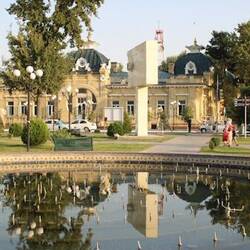
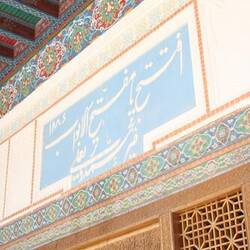

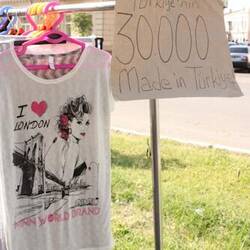















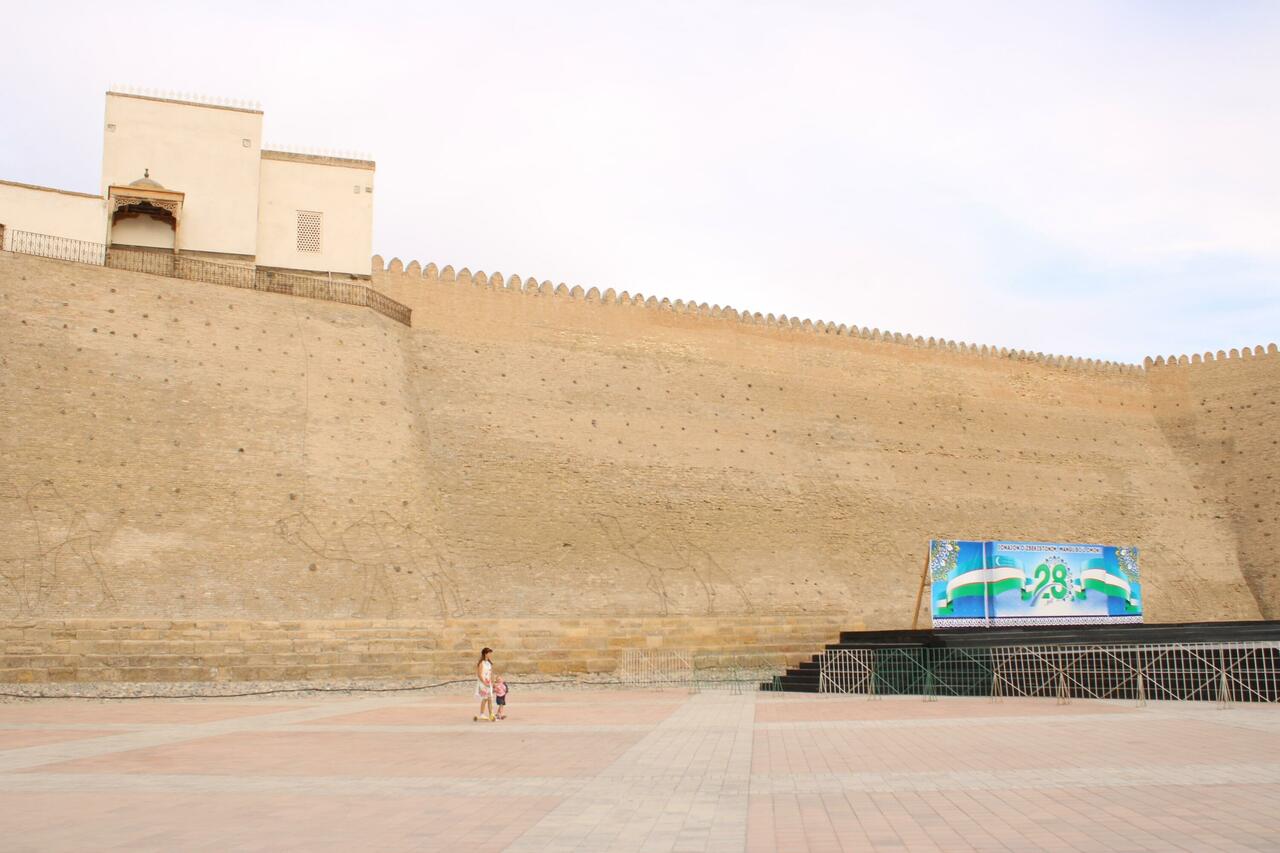
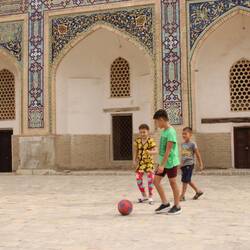


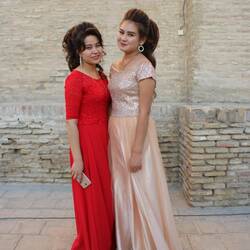



























Speak, WorldHow utterly exciting! This is going to be a stunner of a trip.
RejsendeThanks! More to follow.